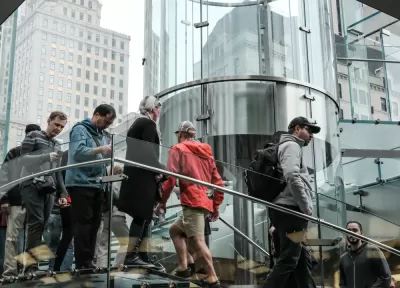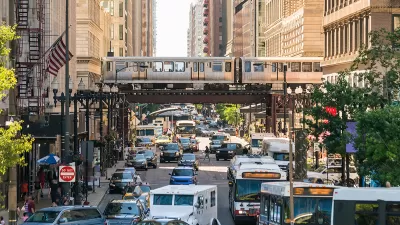Although there is a strong push for accessibility as a key metric in transportation and land use planning efforts, there is still a long way to go in putting theory and intentions into practice.

Accessibility is a popular buzzword among planning professionals. In fact, according to a 2017 analysis by the Brookings Institution, 22 of the 32 metropolitan transportation plans sampled for the report include accessibility in their vision, goals, or objectives.
According to Adie Tomer and Annibel Rice, "more people within the governance and planning communities have begun to subscribe to the concept of building around accessibility, or the ease of reaching destinations."
But, according to Tomer and Rice, "[th]e problem is that accessibility is still stuck in a theoretical place." After providing a list of the shortcomings of current accessibility metrics, Tomer and Rice provide a list of action items to move accessibility toward a more practical and deliverable presence in the planning process.
Here's the list of recommended action items, with a lot more detail provided in the source article:
- First, to promote tangible accessibility results, use clearly defined indicators to measure critical outcomes.
- Second, include accessibility criteria in the selection process for projects.
- Third, measure different destination types, transportation modes, and splits between target demographic groups.
- Fourth, use visualization tools and clear reporting of costs and benefits to inform the public.
FULL STORY: How Urban Planners Can Connect More People to Opportunity

Planetizen Federal Action Tracker
A weekly monitor of how Trump’s orders and actions are impacting planners and planning in America.

Maui's Vacation Rental Debate Turns Ugly
Verbal attacks, misinformation campaigns and fistfights plague a high-stakes debate to convert thousands of vacation rentals into long-term housing.

San Francisco Suspends Traffic Calming Amidst Record Deaths
Citing “a challenging fiscal landscape,” the city will cease the program on the heels of 42 traffic deaths, including 24 pedestrians.

Defunct Pittsburgh Power Plant to Become Residential Tower
A decommissioned steam heat plant will be redeveloped into almost 100 affordable housing units.

Trump Prompts Restructuring of Transportation Research Board in “Unprecedented Overreach”
The TRB has eliminated more than half of its committees including those focused on climate, equity, and cities.

Amtrak Rolls Out New Orleans to Alabama “Mardi Gras” Train
The new service will operate morning and evening departures between Mobile and New Orleans.
Urban Design for Planners 1: Software Tools
This six-course series explores essential urban design concepts using open source software and equips planners with the tools they need to participate fully in the urban design process.
Planning for Universal Design
Learn the tools for implementing Universal Design in planning regulations.
Heyer Gruel & Associates PA
JM Goldson LLC
Custer County Colorado
City of Camden Redevelopment Agency
City of Astoria
Transportation Research & Education Center (TREC) at Portland State University
Jefferson Parish Government
Camden Redevelopment Agency
City of Claremont





























